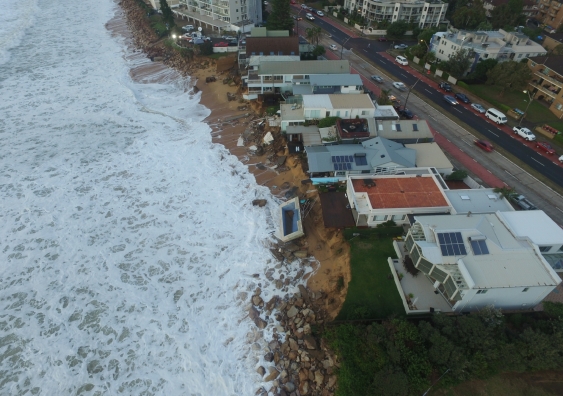Shifting storms to bring extreme waves, damage to once placid areas
The worldÔÇÖs most extensive study of the impacts of coastal storm fronts in a changing climate has found that╠řrising seas are╠řno longer the only threat.
The worldÔÇÖs most extensive study of the impacts of coastal storm fronts in a changing climate has found that╠řrising seas are╠řno longer the only threat.

The worldÔÇÖs most extensive study of a major storm front striking the coast has revealed a previously unrecognised danger from climate change: as storm patterns fluctuate, waterfront areas once thought safe are likely to be hammered and damaged as never before.
The study, led by engineers at University of New South Wales (╗╩╣┌▓╩Ă▒) in Sydney, was published in the latest issue of the╠řjournal╠řNature╠řScientific Reports.
ÔÇťIf you have waterfront property or infrastructure that has previously been sheltered from the impacts of extreme waves, this is worrying newsÔÇŁ said , lead author and a senior research associate at ╗╩╣┌▓╩Ă▒ÔÇÖs (WRL). ÔÇťWhat this study confirms, is that simply by changing direction, storms can be many times more devastating. And thatÔÇÖs what weÔÇÖre facing in many locations as the climate continues to change.ÔÇŁ
, director of WRL and a co-author, said sea level rise was no longer the only factor at play when preparing for the impact of climate change on waterfront areas. ÔÇťShifts in storm patterns and wave direction will also have major consequences because they distort and amplify the natural variability of coastal patterns.ÔÇŁ

Dr Mitchell Harley and Prof Ian Turner of the ╗╩╣┌▓╩Ă▒ Water Research Laboratory in Manly Vale, Sydney.
The study relied on data collected during the June 2016 ÔÇśsuperstormÔÇÖ that battered eastern Australia. One of the fiercest in decades,╠řit inundated towns, smashed buildings, swept away cars and infrastructure and triggered hundreds of evacuations across a 3,000 km swath from Queensland in the north all the way to Tasmania in the south. Three people died and there were more than 80 rescues from stranded cars.
A week before the storm hit, and for many weeks afterwards, the researchers used a fleet of drones, floating sensor buoys, aircraft fitted with LiDAR laser ranging sensors, fixed cameras on buildings and quad bikes and jet skis fitted with real-time satellite positioning across a 200 km swathe of the eastern seaboard. This produced the largest and most detailed pre- and post-storm coastline analysis ever done.
They found that 11.5 million cubic metres of sand were eroded from beaches across a 200 km stretch of AustraliaÔÇÖs eastern seaboard in just the three days of the storm ÔÇô╠řthe equivalent of filling the Melbourne Cricket Ground (capacity 100,000 people) to the brim with sand more than seven times.
This was similar to the amount of sand shifted on the US╠řeast coast by Hurricane Sandy in 2012, the largest Atlantic hurricane on record, which killed 233 people and caused US$75 billion in damage.

╗╩╣┌▓╩Ă▒ÔÇÖs Water Research Laboratory team with some of their survey gear. Left to right: Kristen Splinter, Christopher Drummond, Mitchell Harley and Ian Turner.
It is the damaging power of wave energy ÔÇô and the disruption of long-established storm patterns due to climate change ÔÇô that present a new danger. The June 2016 ÔÇśsuperstormÔÇÖ that devastated